AN AUTUMN VEGETABLE FROM FRANCE, FROM BELGIUM, OR IS IT BATAVIA?
Saying It is Easy; Naming It, Not so Easy
Pinch your nose with your fingers and say “on.” Follow that with a long, drawn out, “d-e-e-e-e-v,” your mouth in a smile to get emphasis on the e’s. Endive. I once considered endive to be lackluster in flavor, so needed to be offset with this highfalutin pronunciation. After many years of growing endive, I’ve come to recognize a more distinct flavor, nutty and just slightly bitter.
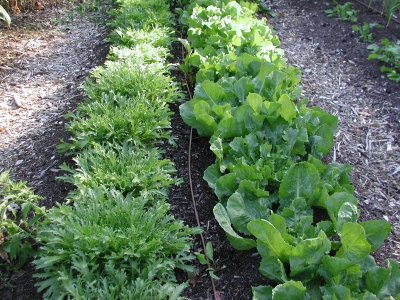
Endive, frisee & escarole
(This is the first time I’ve used “nutty” to describe a flavor, having recently figured out what it means. Nut-like. Duh. Hints of nuttiness are found in the flavors of many foods, including seeds, wines, beans oils, cheeses, fish, and, of course, almonds, hazelnuts, and other actual nuts. Since writing the above description of endive flavor, I learned that others have also described its flavor as nutty. QED)
Whether you consider endive flavor to be lackluster or nutty, what else it has going for it is how easy it is to grow, its cold-hardiness, and its attractive, wavy or frilly leaves. It’s commonly used in restaurants seemingly only for decorative purposes, where a leaf or two might be found lying beneath anything from a taco to a T-bone. In a salad, the texture contrasts nicely with the flatness of lettuce and spinach leaves.
Before going any further, let’s make sure we are talking about the same leafy vegetable, because the common names can be confusing. Botanically, the endive of present interest is Cichorium endiva, although the endive with wavy leaves (C. endiva var. latifolia) is also sometimes called escarole or Batavian endive. The endive with frilly leaves is, botanically, C. endiva var. crispum, and is also called frisée, and is the more bitter of the two.
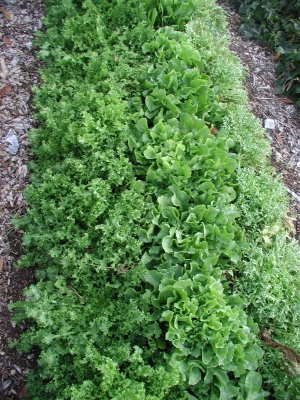
Endive frisée
Confused? Hang on tight because there’s more. Real confusion arises because another plant, botanically Cichorium intybus, is known as French endive or Belgian endive. Complicating matters further, French endive also is known as witloof chicory. French endives (or witloof chicories, whatever you want to call them) are those small, anemic, torpedo-shaped heads of tightly folded leaves.
Common endive has another ritzy cousin in the same species as French endive: radicchio.
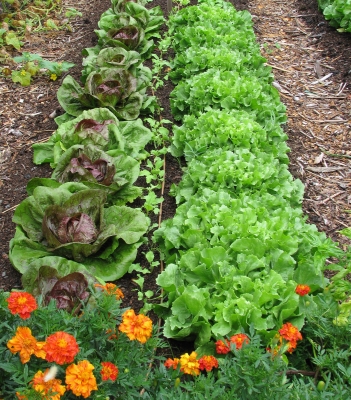
Endive, radish, radicchio
I used to plant a row of that every year. And then I realized that I was doing so only to make myself feel very rich having so much of this expensive salad green (or red). And that, to me at least, it was only bitter, and too much so, so I haven’t grown it for years.
Easier to Grow than to Name
If you planted common endive (C. endiva) this summer, now might be the time to start making it palatable. One leaf under a taco tastes okay, but you would not want to bite into a head of dark, green endive because it’s too bitter. Bitterness is removed from the plant by blanching. Once the plant makes a tight rosette of leaves, the idea is to exclude light from the heart of the plant, which turns it pale, succulent, and sweeter.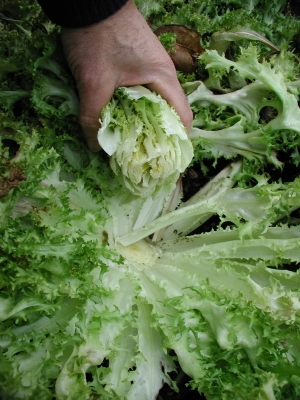
There are a number of ways to accomplish this blanching. You can gather together the leaves of each endive plant, then hold them in place with a rubber band. One problem with this method is that in a wet season, water may get inside and rot the head. You also can blanche endive by inverting a flowerpot over each plant, using a clay flowerpot so the air within does not get too stagnant. You can blanche endive by laying a board over the plants. You’re thinking the board will press the plants down? It does, somewhat. Or blanche endive by digging up the plants and repotting them for growing in a dark cellar.
The amount of time required for blanching depends on temperature. In warm weather, blanching might be finished in a couple of weeks; in cold weather, longer.
I use none of the above methods. Take a look at this year’s endive bed in my garden and you’ll see a three-foot-wide carpet of greenery, a middle row of closely planted endive flanked closely on either side by also closely planted Bibb lettuce plants. The close spacing not only forces the endive leaves up and over the centers, shading the interior leaves, but also shades out any weeds that might try to sprout.
One reason endive is such an ideal salad green for cool weather is precisely because it needs to be blanched. When frost threatens we gardeners scurry out to our gardens and cover plants to keep them from freezing. Well, besides endive’s inherent cold-hardiness, it’s already covered while it is being blanched! I’ll protect my row of self-blanching endive by draping a floating row cover over it or by setting up metal hoops with clear plastic to create a low tunnel.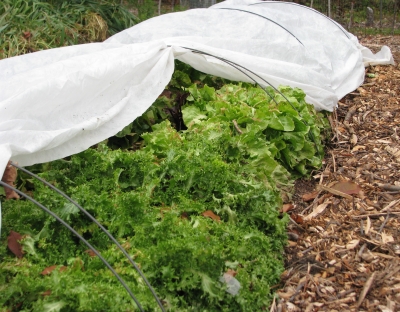
If you missed out on growing endive this season, the next chance for planting it is early next spring for a crop next summer.
I prefer to grow endive as a fall crop only. For fall harvest, I sow the seeds in flats in early July, then transplant the seedlings out to the garden in mid-August. 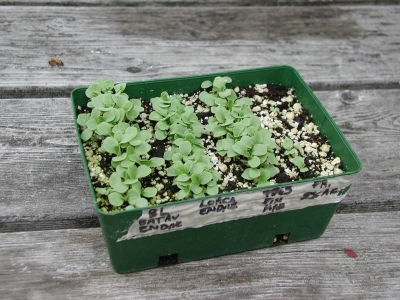
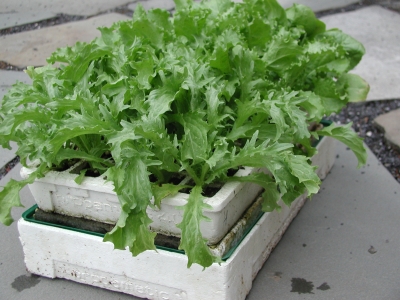
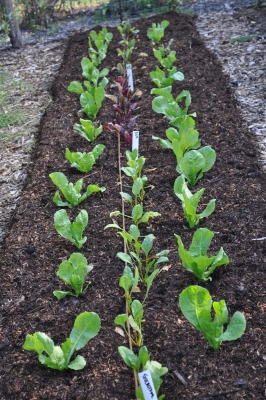 One summer I was late in sowing endive and my plants didn’t grow enough to make blanchable heads. I had to use the less elegant dark, green leaves and pronounce the plant’s name in a similarly less elegant manner, just rolling the words “end” and “dive” together.
One summer I was late in sowing endive and my plants didn’t grow enough to make blanchable heads. I had to use the less elegant dark, green leaves and pronounce the plant’s name in a similarly less elegant manner, just rolling the words “end” and “dive” together.

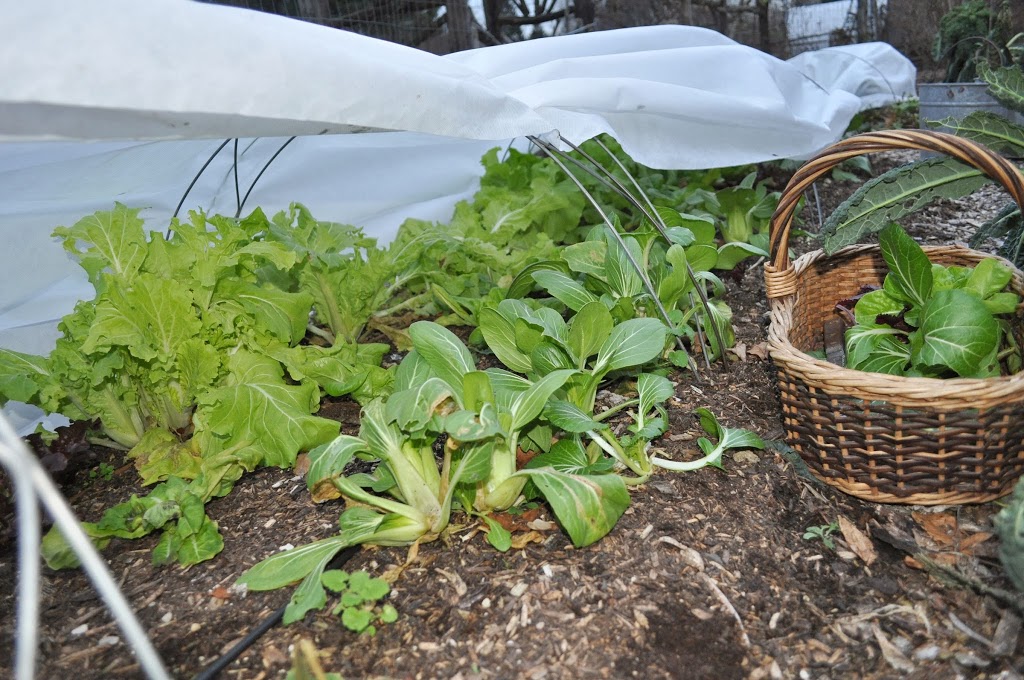


I love escarole and I’ll just call it that and I like the bitterness. Interesting thou to sweeten it up a bit for a salad. So here is the question: You are much further north than I am in northern NJ. All of August was HOT!!! So would u still put out your fall escarole in mid-August with so much heat? I was hesitant with all my fall crops this year. I am guilty of thinking we would have the same warm fall we had last year.
The late summer heat has never bothered my escarole. I’ve never has one go to seed. Not true of lettuce, which I planted this year with my escarole. All of them have gone to seed. Escarole needs either a much longer season before it will go to seed, or a long period of cold followed by warmth, telling it winter is over.
I’m a big escarole fan. I’m always surprised when I see it in the market priced cheaper than all the other greens. Folks just don’t like bitter, I suppose, even though bitters are sorely lacking in our American diets. Bitter tastes are used in Chinese Medicine to remedy digestive issues such as heartburn and reflux. The incidence of these conditions in the US is testament to a diet that is out of balance with too much sweet and salty flavors.
I’m sure any day now, someone with a big media footprint will ‘discover’ this great green and its pricing will follow such things as quinoa and brisket. But for now, I’m sautéing it each week with garlic, olive oil and some chicken stock, and now and then some white beans.
Interesting, even though I don’t have heartburn. I never heard of a relation between bitters and heartburn, but will investigate it. I have read some stuff about breeding for less bitter vegetables resulting in less nutritious vegetables, and there seems to be some validity. There’s a book about this general topic, but I forgot the name of the book.
Endive is a versatile, nutty-flavored vegetable, easy to grow and perfect for fall. It requires blanching to remove bitterness. Several varieties exist, such as frisée and escarole.
The late summer heat has never bothered my escarole. I’ve never has one go to seed. Not true of lettuce, which I planted this year with my escarole. All of them have gone to seed. Escarole needs either a much longer season before it will go to seed, or a long period of cold followed by warmth, telling it winter is over.
I agree about escarole and lettuce. I keep us in lettuce by sowing every couple of weeks so pants never get old enough to bolt.